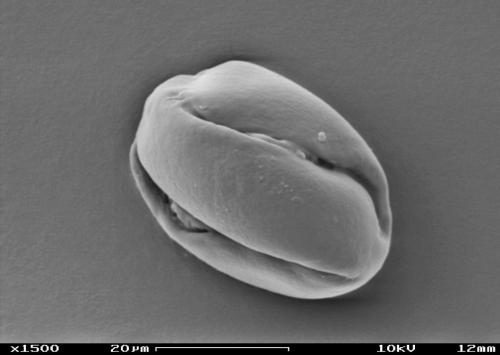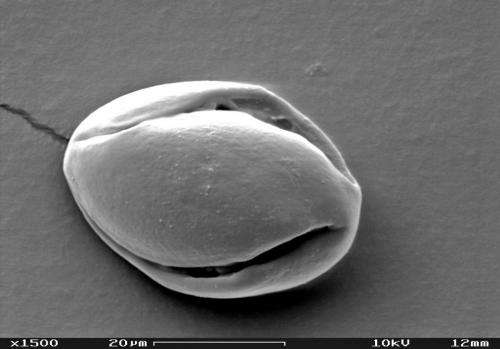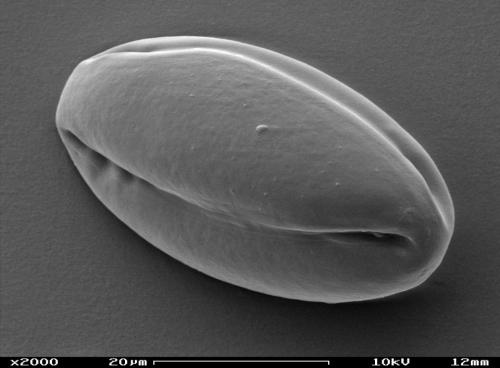DACTYLIFERA Walther, 1972 (engl./ fr.)
Series Gibbiflorae
Type : Dudley B. Gold s.n. CAS 412759.
Etymology : Gr. « dactylos » = finger - named for the finger-like petal appendages.G
Distribution : Mexico (Sinaloa, Durango, Jalisco ? - see Note below).
First Description by Walther, Echeveria, 179 – 182, 1972, from a greenhouse-grown plant :
Glabrous, stemless or nearly so.
Rosettes mostly simple, with rather few, crowded, sessile leaves, these elliptic-oblong, acute, somewhat cuneate towards the thick, keeled base but not petiolate, blade folded upwards from the midrib, to 25 cm long or more, to 9 cm broad, light brown above, margins red, lower side greyish-green tinged pink.
Inflorescence solitary, to 100 cm tall, strict, erect, paniculate, with many short, secund, few-flowered branches; lower bracts narrowly oblong-elliptic, flat, acute, to 7 cm long and 2 cm broad, pedicels slender, to 20 mm long, somewhat thickened below calyx. Peduncle and pedicels old-rose with bloom.
Flowers : Sepals unequal, longest to 20 mm long, deltoid to oblong-ovate, acute, flattish, connate at base, the largest sometimes pseudocarinate at base, ascending, vinaceous-lavender; corolla narrowly urceolate, pentagonal, to 30 mm long, 17 mm in basal diameter, 15 mm at mouth, pink with bloom, petals bluntly keeled, their tips hooded and apiculate, inside yellow, the basal hollow short, its upper rim produced into two fingerlike processes at base of epipetalous filaments. These fingers recurved in front of filament base, and there bearing three or more bright red dots; anthers to 6 mm long, carpels 25 mm long, whitish, styles long and slender, somewhat outcurved above, red, stigmas obliquely truncate, nectaries narrowly lunate, to 4 mm wide, maize-yellow, never scarlet.
Flowers from December on.
Cytologie : n = 54.
Distributed as ISI 493 in 1966 and ISI 863 in 1974.
Link to short descriptions in English and French.
Note :
1. Walther’s description was from a plant in cultivation in the greenhouse of Victor Reiter in San Francisco, and it is not known for how long it had been cultivated there. This plant had leaves to only 25 cm long while – according to Reid Moran - plants in nature can reach a rosette diameter of 80 – 100 (!) cm.
2. Plants occurring in Aguascalientes, thought to be E. dactylifera (Pilbeam, The genus Echeveria, 2008, p. 100), are not this species but the 2011 described E. novogaliciana.
3. Whether herbarium specimens of plants collected in Jalisco, also determined as E. dactylifera, are correctly identified, is uncertain. While by now there is no doubt regarding the occurrence of the quite similar E. novogaliciana in Jalisco, it is uncertain whether E. dactylifera is also growing there or whether all plants previously considered to be E. dactylifera in fact are E. novogaliciana.
Plants in habritat in Mexico, off the road from Durango to Mazatlan :
Plantes dans l'habitat mexicain, sur la route reliant Durango à Mazatlan :
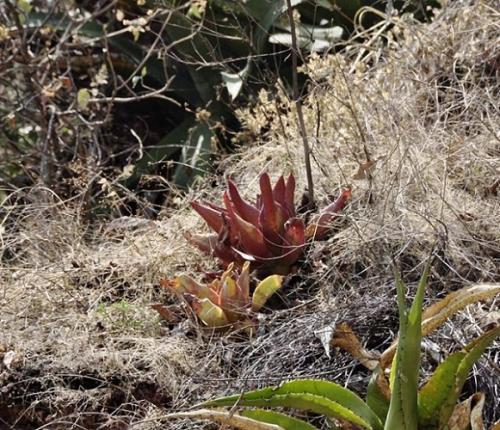
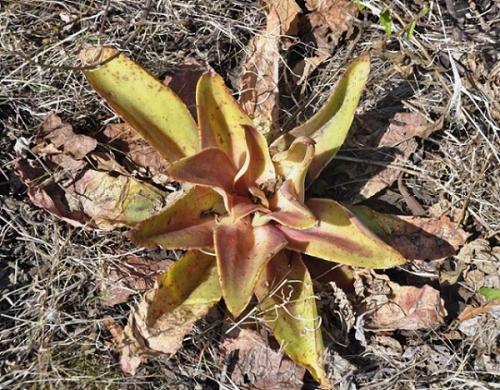
Meztitlan :
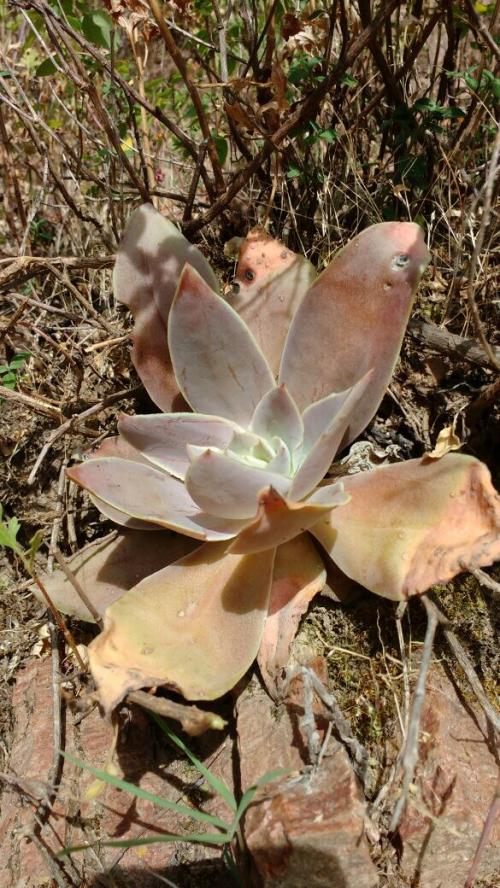
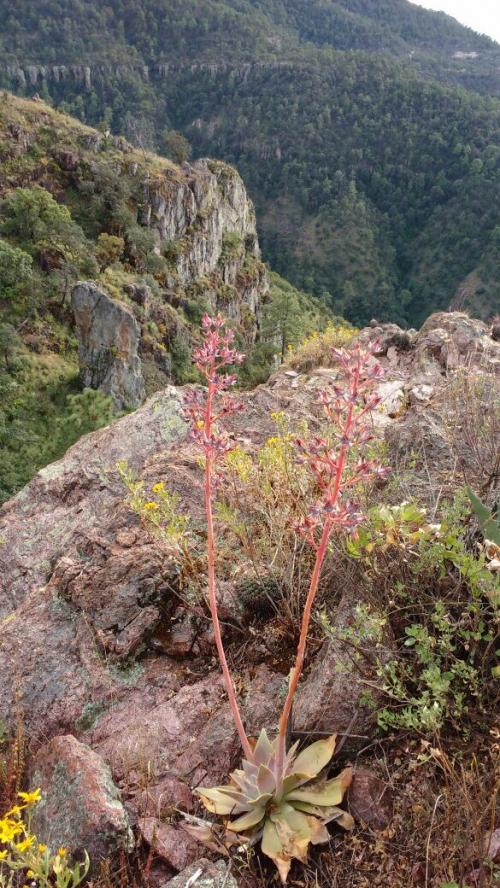
Photos Alfredo Lau
Plant in cultivation :
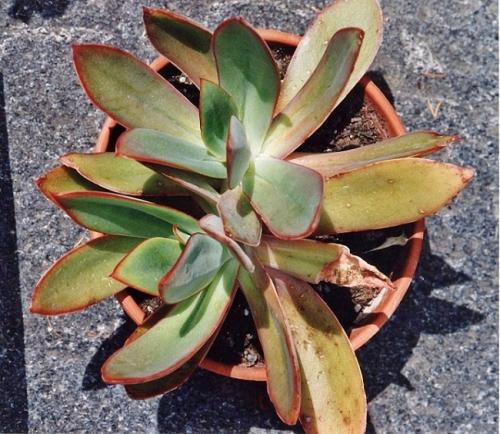
Photo Margrit Bischofberger
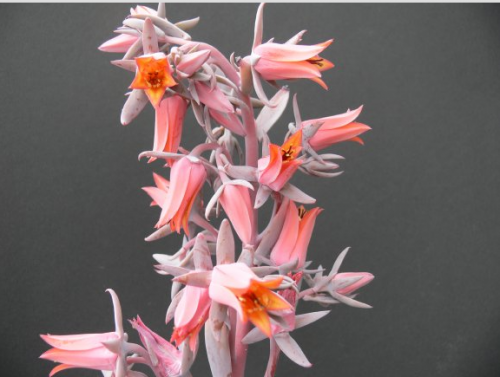
Photo Gerhard Köhres
A variegated form :
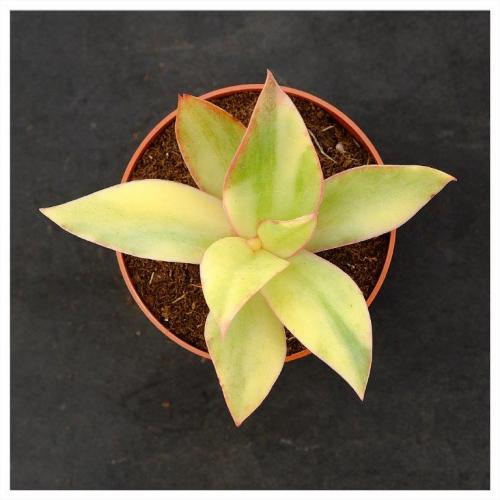
Photo Leo Gonzalez
